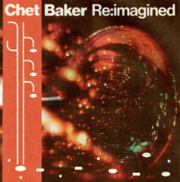New York, NY (Top40 Charts) The history of music is woven with countless threads of innovation, rebellion, and artistic expression. Few journeys are as fascinating as the evolution from the mind-expanding sounds of 1960s psychedelic rock to the diverse, often introspective landscapes of modern indie music. This transformation represents not just changing musical preferences, but profound shifts in cultural attitudes, technological capabilities, and artistic philosophies.
The Dawn of Psychedelic Exploration
The mid-1960s marked a revolutionary period in music history. As social norms were being challenged across the Western world, musicians began experimenting with sounds that could reflect and enhance altered states of consciousness. Bands like The Beatles, Pink Floyd, and The Doors pioneered techniques that would define psychedelic rock: extended improvisations, exotic instrumentation, surreal lyrics, and innovative studio effects.
These musical innovations weren't happening in isolation. They reflected broader cultural movements, including the counterculture's exploration of consciousness through various means. The music became both a catalyst for and a reflection of changing perspectives.
Studio as Instrument
Psychedelic rock transformed the recording studio from a mere documentation tool into an instrument itself. Producers like George Martin and bands like The Beach Boys (with "Pet Sounds") demonstrated that studio techniques could create soundscapes previously unimaginable in live performance.
This approach to production — treating recorded music as a distinct art form from live performance — would later become fundamental to indie music's development. Artists began to value the creative control afforded by studio experimentation, setting the stage for the DIY ethic that would eventually characterise independent music.
The Post-Psychedelic Era and Progressive Developments
As the 1960s gave way to the 1970s, psychedelic rock evolved into several distinct directions. Some artists pushed toward greater complexity, creating progressive rock with its ambitious compositions and virtuosic performances. Others stripped away the excesses, returning to more direct forms of expression through punk rock.
Cultural shifts have also become more conspicuous. In part, today's growing acceptance of cannabis consumption is due to social changes introduced in the 1970s. If today, you can easily click here to buy feminized seeds, the 1970s musicians did not have it that easy. And yet, the rebellious spirit persisted, affecting the community and history at large.
The Birth of Independent Labels
One of the most significant developments of this period was the emergence of independent record labels. Companies like Stiff Records, Factory Records, and SST Records provided platforms for artists who didn't fit the commercial mould of major labels.
These indie labels established important precedents:
- Artist-friendly contracts;
- Emphasis on artistic integrity over commercial potential;
- Regional music scenes and identities;
- Direct connections between artists and audiences.
The infrastructure these pioneering labels created would eventually support the flourishing of indie music as we recognise it today.
The Digital Revolution and Indie Emergence
The 1990s and early 2000s witnessed dramatic technological changes that democratised music production and distribution. Suddenly, high-quality recording tools became affordable to average musicians, while the internet opened new channels for sharing music directly with listeners.
This technological revolution aligned perfectly with the independent ethos that had been developing for decades. Now artists could maintain complete creative control throughout the recording, production, and distribution process — truly "independent" in ways their predecessors could only imagine.
The Psychedelic Influence on Modern Indie
Modern indie music often draws direct inspiration from psychedelic rock, though transformed through contemporary sensibilities. We can observe these influences across several dimensions:
|
Psychedelic Element
|
Modern Indie Interpretation
|
|
Extended improvisation
|
Atmospheric post-rock soundscapes
|
|
Exotic instrumentation
|
Integration of global music influences
|
|
Studio experimentation
|
Digital production techniques and sampling
|
|
Consciousness exploration
|
Introspective, often vulnerable lyrics
|
|
Visual art integration
|
Multimedia approaches to music releases
|
These trends demonstrate how musical DNA can transmit across generations while adapting to new contexts.
Cultural Context and Community Building
One of the most significant parallels between the psychedelic era and today's indie scene is the importance of community. The 1960s had their communes and gathering spaces; modern indie has its festivals, online communities, and local scenes.
Technological Enablers
The technologies that enable musical communities have evolved beyond the grandfathers' imagination:
- Social media platforms allowing direct artist-fan communication;
- Streaming services providing unprecedented access to music history;
- Video platforms enabling visual storytelling alongside music.
These tools have transformed how music is created, shared, and experienced, but they serve the same essential purpose as the independent radio stations, underground magazines, and word-of-mouth networks of previous eras.
The Future of Musical Evolution
Looking forward, we can expect the boundaries between psychedelic influences and independent production approaches to continue blurring. The cyclical nature of music means that each generation rediscovers and reinterprets elements from the past while adding their unique perspective.
The journey from psychedelic rock to modern indie illustrates how musical movements don't simply replace one another but rather build upon foundations laid by previous generations. Each era's innovations become tools in an ever-expanding artistic toolkit, available to future musicians who will continue this ongoing conversation between past and present.
























